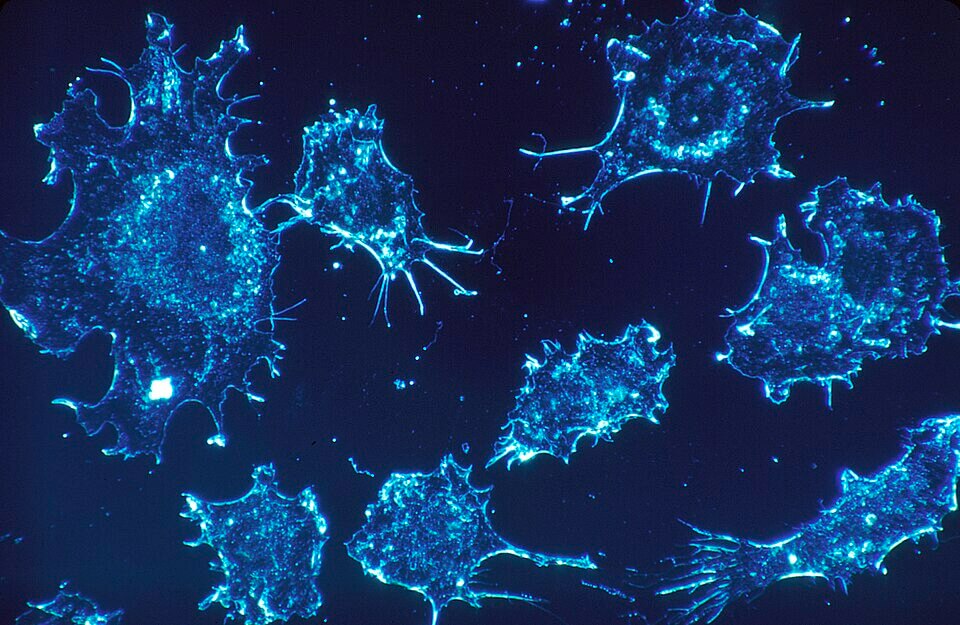In the world of medicine, immunotherapy is a hot topic. It has uses in the treatment of many fatal diseases, even of aging.
Simply, immunotherapy is enhancing and exploiting the body’s natural immune system to fight disease.
Think of it as being like a martial art, where you use an opponent’s strength against him. Call it medical Judo.
Dr. Jason R. Williams, a Beverly Hills oncologist and radiologist, is passionate practitioner of intratumoral immunotherapy and has a string of successful cancer outcomes, he tells me and my co-host, Adam Clayton Powell III, on “White House Chronicle,” the weekly news and public affairs program on PBS.
Williams, who heads up the eponymous Williams Cancer Institute, believes in aggressively attacking cancer, as he says, “from the biopsy.”
In cancer cases, he explains, by the time a needle is inserted into the tumor, the clinician is pretty certain of a cancer finding.
“When you stick a needle into a tumor, that’s your chance to actually start treating,” says Williams, who is a board-certified radiologist and interventional oncologist.
The current practice in cancer treatment is to treat cancer from outside the body with radiation and oral drugs. But Williams’ institute is pioneering a system of fighting cancer from within the body by delivering a cocktail of drugs directly into the tumor.
The goal is to stimulate the body’s immune system while preventing the cancer from eluding the drugs. “Cancer has various ways to hide from the immune system,” says Williams.
Williams sees his cancer treatment as a precursor to a new era when immunotherapy can fight many diseases and lengthen people’s lives.
“We’ve been working with immunotherapies and it seems like they’re actually making patients younger,” he says. “One of the things that we figured out is that the immune system is what helps keep us young and healthy. And so by boosting the immune response against the cancer, the immune cells will also start killing older cells.”
He explains further, “Cancer and aging are a very similar process. Cancer is a cell that has a mutation and it wants to work for itself; it doesn’t work with the body. An old cell is a cell that doesn’t have a mutation, but it’s not doing its job and it should be eliminated.
“Neither one of these cells want to die and they send signals to the immune system to stay alive. When you block those signals, the immune system kills those cells and allows younger cells to come in and flourish. And so this is what we’ve been seeing.”
The use of cocktails of drugs to fight diseases has a long history. It started in 1955 with Emil J. Freireich, a pioneering oncologist known for his groundbreaking work in leukemia treatment, particularly childhood leukemia. He came to be known as a founding father of modern clinical cancer research.
As a young doctor, Freireich was assigned to care for the children in the leukemia ward of the new National Cancer Institute in Bethesda, Maryland. It was a dreaded assignment because the children suffered horribly and the mortality rate was very high.
He suggested to colleagues that rather than administering drugs singly to their young patients, they do so simultaneously, as a cocktail of drugs.
Freireich was attacked as a dangerous crank. But he persisted, arguing that the children were dying and his therapy would work.
And it did work. Today, drug cocktails are the basis of leukemia treatment. For children with leukemia, the five-year survival rate is now around 90 percent, meaning a high chance of being cured, according to St. Jude’s Children’s Research Hospital and Dana-Farber Cancer Institute.
Williams is a big believer in using these chemo cocktails, except he believes in delivering them directly into the tumor. He says on “White House Chronicle” that the dose might include as many as 12 different drugs.
He thinks artificial intelligence will be helpful in creating new drug cocktails without the challenges of dangerous interactions or other bad effects.
Williams is an adjunct professor at Case Western Reserve University in Cleveland, Ohio, where he is helping to further cutting-edge research. He is the author of “The Immunotherapy Revolution.” In addition to Beverly Hills, the Williams Institute operates clinics in Miami, Mexico and Saudi Arabia.
